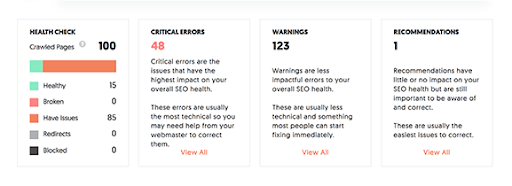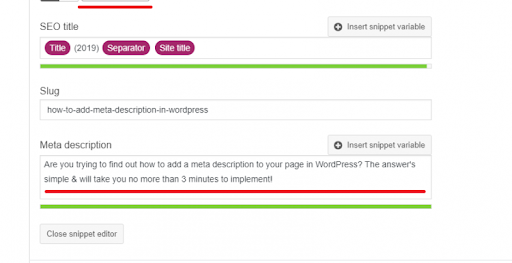Affiliate marketing is a performance-based marketing strategy where a company (the merchant) compensates affiliate partners (individuals or websites) for each sale or lead generated through their promotional efforts. SEO (Search Engine Optimization) is the process of improving a website’s visibility in search engine results pages (SERPs) to drive organic traffic. Combining SEO with affiliate marketing can significantly boost affiliate program success by increasing visibility and attracting more targeted traffic to your affiliate links.

Here’s a more detailed breakdown:
Affiliate Marketing:
- How it works:Affiliate marketers promote a product or service on their website or social media platforms and earn a commission for each sale or lead generated through their unique affiliate link.
- Benefits:Low cost, high potential for commission, and the ability to leverage an existing audience.
- Example:A fashion blogger promoting a clothing brand’s products on their website, earning a commission for every sale made through their affiliate link.
SEO (Search Engine Optimization):
- Goal:Improve a website’s ranking in search engine results pages for specific keywords and phrases.
- How it works:SEO involves optimizing website content, structure, and technical elements to make it more appealing to search engines.
- Benefits:Increased website traffic, higher visibility, improved credibility, and ultimately, more sales.
Combining SEO and Affiliate Marketing:
- Increased Visibility:SEO ensures your affiliate website or blog ranks higher for relevant keywords, attracting more traffic and potential buyers.
- Targeted Traffic:By optimizing your website for specific niches and keywords, you can attract visitors who are more likely to be interested in the products you’re promoting, increasing conversion rates.
- Improved Credibility:A well-optimized website signals to visitors that you are an authority in your niche, which can build trust and encourage them to make purchases.
- Higher Conversions:When your website ranks higher and attracts more targeted traffic, you are more likely to convert those visitors into customers.
The Best SEO Affiliate Marketing Guide
Using SEO to boost your affiliate marketing is an essential part of today’s digital marketing strategy. You might own an affiliate website or you might just want to boost your revenue. Either way, SEO for affiliate marketing is a broad combination of SEO — search engine optimization — and affiliate marketing.
In terms of goals, both SEO and affiliate marketing are working towards the same thing: they’re types of digital marketing that aim to direct the right customers to a brand.
SEO defines where a website sits in a browser’s SERPs — search engine results pages. It’s imperative to get your landing pages on the first page of results for relevant keywords on Google search and other search engines. Ideally, you’ll be in the top three, especially if you can get Google to display a snippet from your site.
Affiliate marketing, on the other hand, implies a brand paying commissions to influencers and affiliate website owners for driving traffic from their sites or social media platforms to the brand’s website.
In combination, implementing SEO for affiliate marketing can turn into a powerful tool that will boost advertiser’s conversions and sales and, consequently, increase affiliates’ commissions and income.
Get to Grips with SEO
Though SEO-driven affiliate marketing is a blend of the two disciplines, it’s still hugely important to have a solid general SEO strategy, and know the best practices for your site.
It’s particularly relevant in the eCommerce world, but useful elsewhere, too. In fact, even recruitment teams should be getting on board with marketing practices to ensure that they’re attracting the most high-quality candidates.
It can be helpful to start with a site audit to get an idea of how your SEO currently shapes up. You may employ one of the free SEO analyzing tools available online, such as SEO Analyzer from Neil Patel, the checker from Seobility, SEOptimer, and so on.
On average, such SEO checking tools analyze your website by multiple factors, such as on-page SEO, backlinks, usability, and more, and assess overall performance score. Apart from it, you may also access the detailed report about the SEO issues on your website.

Even if you’ve got a high score from SEO analyzing tools, there’s still room for improvement. Thus, after finishing the audit, go through the following tips to optimize your SEO strategy and integrate it with affiliate marketing.
Combining SEO With Affiliate Marketing
Once you have your SEO marketing strategies in place, you can start to implement them for your affiliate marketing business. Affiliate marketing is loved by bloggers as a source of passive income. Once the great content is out there, they can continue to reap the benefits of affiliate links.
So, how best to leverage your SEO efforts to optimize for affiliate marketing?
Identify the Right Keywords for You
SEO and content marketing are all about identifying your niche and playing to your strengths. Think about your target audience, and pinpoint keywords accordingly. You’ll need to do some keyword research, and fortunately there are plenty of keyword research tools on the market, like Google Keyword Planner.
You could rely solely on Google Ads and PPC (pay-per-click) advertising, in which you pay for a high position in the SERP. However, this is an expensive way to go about things.
Instead, focus on relevant search queries that your site can legitimately provide an answer or resource for.
This is where knowing your niche comes in handy. If you target keywords with a high search volume, it might put you in front of many eyes — if you get your SEO really on point, or pay a fortune in ad investment.
Even then, there are downfalls to that strategy. If you’re not providing exactly what people are looking for, they’ll bounce from your site quickly. This damages your SEO and means your ROI is terrible!
Instead, think about long-tail keywords. These are much more specific search queries, usually four- or five-word phrases. When you’re ranking top of the SERP for a really specific keyword, you’ll see a much higher conversion rate.
For example, searchers might Google “cloud software”, hoping to find a platform like Dropbox or Google Docs. If you’ve somehow managed to outrank these giants — which is unlikely — it’s likely that you’re not providing the service the customer is looking for anyway.
On the other hand, if you rank highly for “cloud VoIP”, providing that it’s exactly what your company deals in, you’ll get much better leads from your SEO.

Write Content With Humans in Mind
It can be tempting to cater solely for the bots that crawl websites, stuffing a piece of content full of keywords and phrases that don’t flow well. These have the effect of making your content — whether it’s partner pages or blogs — feel stilted and difficult to read.
Crucially, Google’s algorithm, and those of other search engines, have the human consumers’ interests at heart. As well as how many keywords you use, they look at factors like how relevant people find your pages.
One of the ways this is calculated is based on your bounce rate: how likely people are to stay on the initial page they clicked on, and your site as a whole. Those looking for a commercial phone service, for example, don’t want to be directed to a page for personal SIM card deals.
An abundance of nonsensical keywords might look good to the robots, but it will drive humans away in droves, affecting both potential customers’ experience and your SEO.
Consequently, your content should be written with humans in mind. It should be interesting, informative, and position you as the authority on your subject. Case studies are always a good way to go. If you’re genuinely adding value to the conversation, you can’t go too far wrong.
Label Your Content Correctly
Whilst you should be ensuring that you’re generating high-quality content, it’s also a good idea to bear in mind exactly how you label it.
Headings and subheadings not only make long pieces much easier to read, but they also signpost search engine bots to the most important parts of your content. These headings should use significant keywords, if possible. An article on VoIP services, for instance, might contain subheadings on how to set up VoIP, why VoIP is useful to businesses, etc.
Additionally, domain names play a part in how well your SEO does. You need something that properly communicates who you are, while also being unique enough that you stand out from competitors.
Then there’s meta descriptions: Snippets of your content that will show up on search engines. These are hugely useful both for organic traffic and PPC. They tell those browsing what to expect when they click on your link. Make sure these are relevant, as that will reduce the number of people who click wanting something else entirely.
Content management systems like WordPress often have a meta description plugin, allowing you to adjust the length and keywords to best effect.

